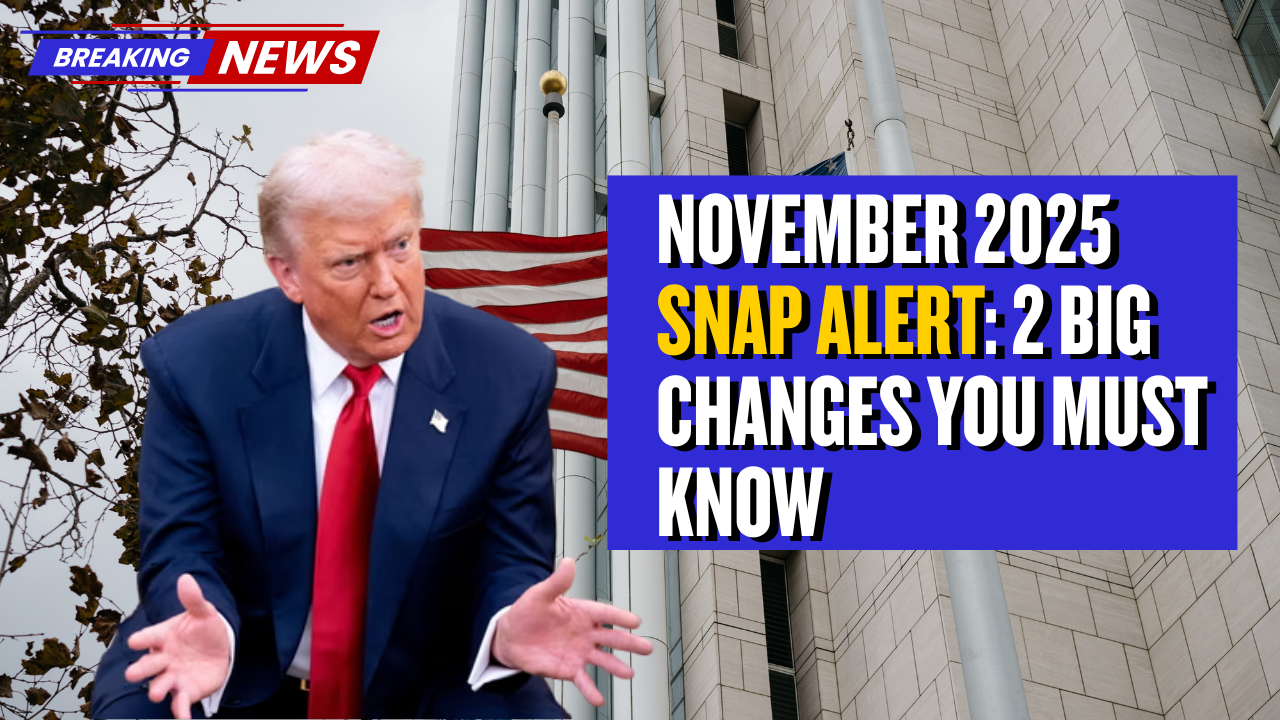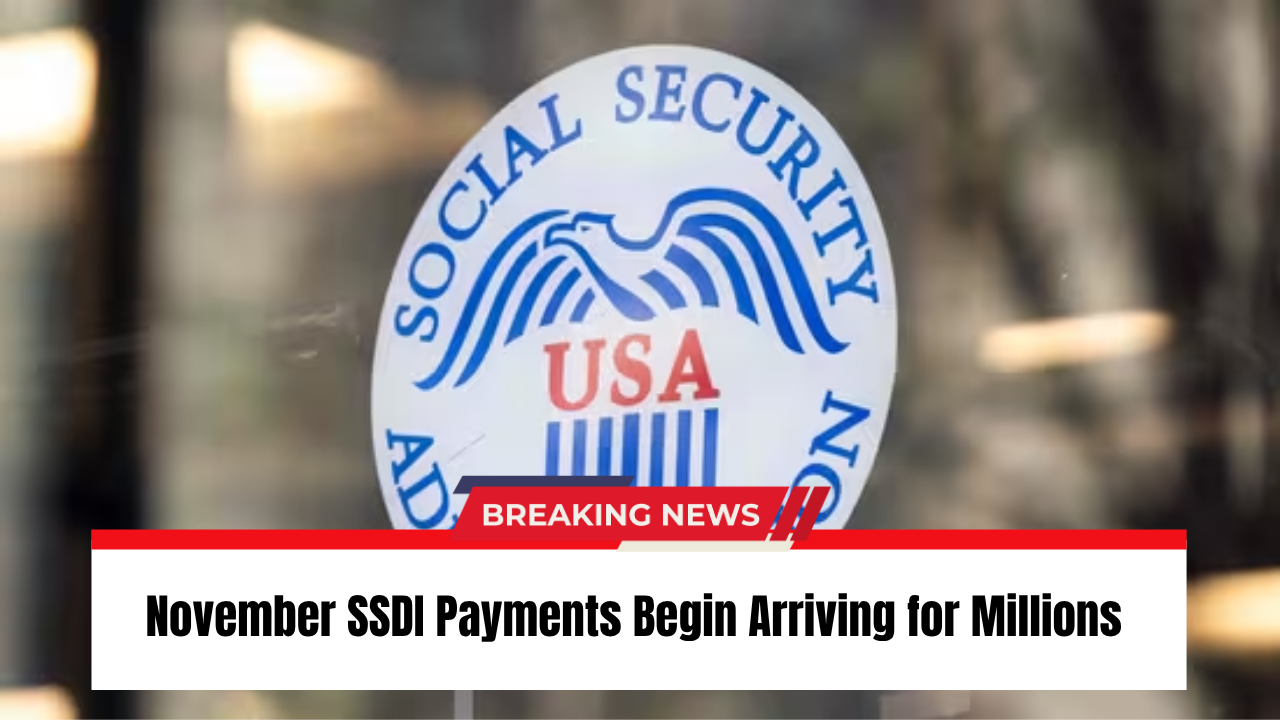As November 2025 begins, millions of Americans who rely on the Supplemental Nutrition Assistance Program (SNAP) are facing fresh uncertainty. Not only could a federal government shutdown disrupt SNAP payments, but new work requirement rules are also taking effect that may change who remains eligible.
Every month, about 42 million Americans use EBT cards to buy groceries. With food prices still elevated and inflation pressuring household budgets, any interruption or rule change in SNAP can have immediate, real-world consequences for families.
What’s Behind the Risk of Delayed November SNAP Payments?
The key threat to SNAP November 2025 benefits is the ongoing federal government shutdown, which began in mid-October and has frozen several federal funding streams. Because SNAP is federally funded, even though it is run by states, a prolonged funding gap can interrupt the flow of benefits.
On October 10, 2025, the U.S. Department of Agriculture (USDA) (hyperlink: USDA official website) warned state agencies that, without a new budget agreement, full November SNAP payments may not be guaranteed. States have already been told to pause some data submissions to EBT processors until funding is confirmed.
This could result in:
- Some states issuing early payments to get ahead of potential disruption
- Other states experiencing mid-month delays if federal funds don’t arrive in time
USDA officials have said they are working to avoid a complete suspension, but they acknowledge that partial or delayed benefits are still possible if the shutdown continues deep into November.
State-by-State November 2025 SNAP Payment Schedule
Most states have released tentative November SNAP schedules, assuming federal funds will be approved. These are the current projected EBT loading windows for November 2025:
| State / Territory | Distribution Dates |
|---|---|
| Alabama | November 4–23 |
| Alaska | November 1 |
| Arizona | November 1–13 |
| Arkansas | November 4–13 |
| California | November 1–10 |
| Colorado | November 1–10 |
| Connecticut | November 1–3 |
| Delaware | November 2–23 |
| District of Columbia | November 1–10 |
| Florida | November 1–28 |
| Georgia | November 5–23 |
| Guam | November 1–10 |
| Hawaii | November 3–5 |
| Idaho | November 1–10 |
| Illinois | November 1–20 |
| Indiana | November 5–23 |
| Iowa | November 1–10 |
| Kansas | November 1–10 |
| Kentucky | November 1–19 |
| Louisiana | November 1–23 |
| Maine | November 10–14 |
| Maryland | November 4–23 |
| Massachusetts | November 1–14 |
| Michigan | November 3–21 |
| Minnesota | November 4–13 |
| Mississippi | November 4–21 |
| Missouri | November 1–22 |
| Montana | November 2–6 |
| Nebraska | November 1–5 |
| Nevada | November 1–10 |
| New Hampshire | November 5 |
| New Jersey | November 1–5 |
| New Mexico | November 1–20 |
| New York | November 1–9 |
| North Carolina | November 3–21 |
| North Dakota | November 1 |
| Ohio | November 2–20 |
| Oklahoma | November 1–10 |
| Oregon | November 1–9 |
| Pennsylvania | November 3–14 |
| Puerto Rico | November 4–22 |
| Rhode Island | November 1 |
| South Carolina | November 1–19 |
| South Dakota | November 10 |
| Tennessee | November 1–20 |
| Texas | November 1–28 |
| Utah | November 5, 11, 15 |
| Vermont | November 1 |
| Virginia | November 1–7 |
| Washington | November 1–20 |
| West Virginia | November 1–9 |
| Wisconsin | November 1–15 |
| Wyoming | November 1–4 |
If federal funding resumes before November 1, benefits should load normally within these ranges. If the shutdown persists, some states may push payments back, particularly in the second half of the month.
New Work Requirement Rules Under the OBBBA Act
The second major change in November 2025 SNAP is the rollout of stricter work rules under the One Big Beautiful Bill Act (OBBBA). These changes adjust who must meet work requirements to keep receiving benefits.
| Category | Previous Rule | Updated Rule (Nov 2025) |
|---|---|---|
| Able-Bodied Adults Without Dependents (ABAWDs) | Work or training 80 hours per month up to age 59 | Work or training 80 hours per month up to age 65 |
| Childcare Exemptions | Exempt if caring for a child under 18 | Exempt only if caring for a child under 14 |
| Veterans & Homeless Individuals | Largely exempt | Automatic exemption removed, states may grant exceptions |
| Disabled or Pregnant Individuals | Exempt | Still exempt |
These new rules are promoted as a way to encourage self-sufficiency, but many anti-hunger advocates warn they could increase food insecurity for older adults, caregivers, and vulnerable veterans who struggle to meet hourly work thresholds.
Holiday and Thanksgiving Adjustments
Because Thanksgiving falls at the end of the month, states that usually deposit benefits late (such as Texas and Florida) may push some payments earlier, assuming federal funds are available.
Recipients are urged to:
- Check their state SNAP or DHS website regularly
- Watch for text, mail, or portal alerts about early or adjusted deposits
What to Do If Your SNAP Benefits Are Delayed
If you experience a delay in November SNAP payments, there are several emergency options:
| Resource | Description |
|---|---|
| Food Banks & Pantries | Local food banks and community centers can provide emergency groceries |
| Local Charities | Faith-based and community groups often offer meals or grocery support |
| State Emergency Aid | Some states may issue temporary “bridge benefits” if delays extend |
| Existing EBT Balance | Any unused October balance remains active and can be used in November |
National networks such as Feeding America (hyperlink: Feeding America official site) have already reported higher demand as families prepare for possible federal program disruptions.
Economic Impact of SNAP Disruptions
SNAP isn’t just a lifeline for households—it’s also vital to local economies. USDA research suggests every $1 of SNAP spending can generate up to $1.80 in broader economic activity.
When benefits are delayed:
- Families cut back on food purchases
- Grocery stores, corner markets, and farmers’ markets lose revenue
- Food banks see surging demand that can strain their supplies
Any sustained interruption risks creating a ripple effect across communities, especially in rural and low-income urban areas.
How to Check Your November 2025 SNAP Benefits
To track SNAP November 2025 payments, recipients can use several secure channels:
- EBT Portal or Mobile App – Most states offer online access for real-time balance checks
- Automated EBT Hotline – Phone number on the back of your EBT card for balance and deposit info
- Local SNAP Office or Caseworker – Can verify when your next deposit is scheduled
EBT deposits may occur anytime between midnight and early morning, depending on how your state processes payments.
Conclusion: Stay Informed, Plan Ahead
The November 2025 SNAP landscape is shaped by two major developments:
- The threat of payment delays due to the federal government shutdown
- Tougher work requirement rules under the OBBBA Act
For now, most recipients should still expect their benefits during the usual state payment window, but planning for short-term delays and staying in close contact with state agencies is wise. Those affected by the new work rules should speak with a local caseworker to confirm their exemption status or compliance options.
In a time of rising costs and economic uncertainty, SNAP remains a critical safety net for millions of American families—and protecting its stability is essential to national food security.



